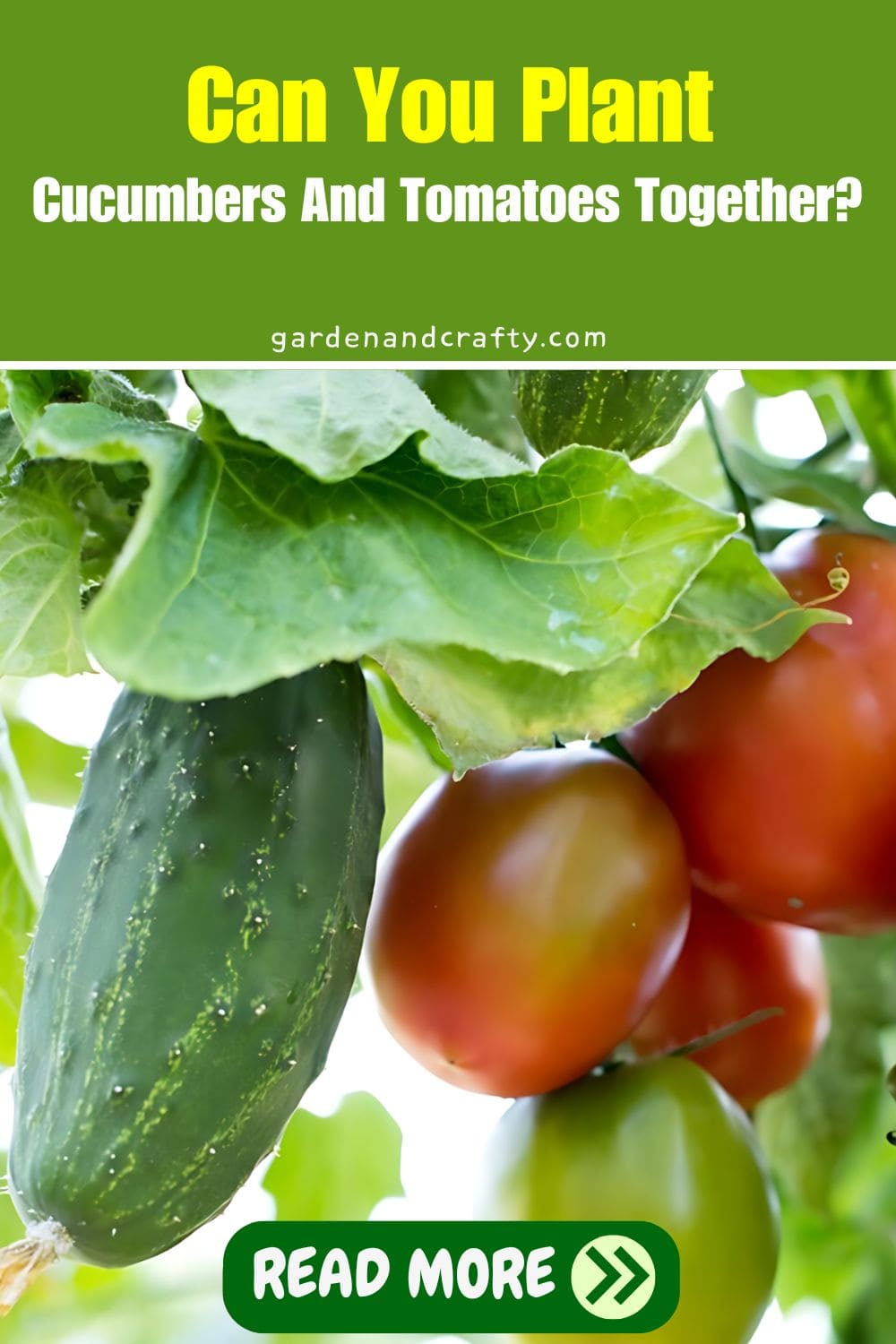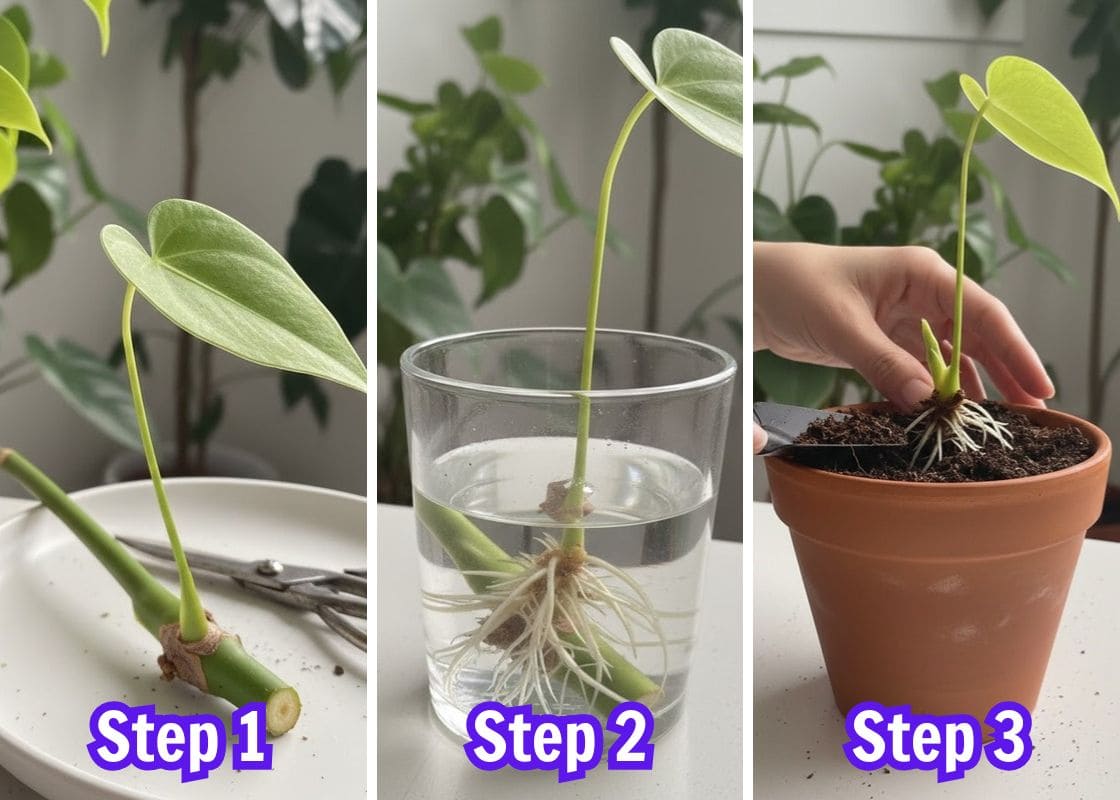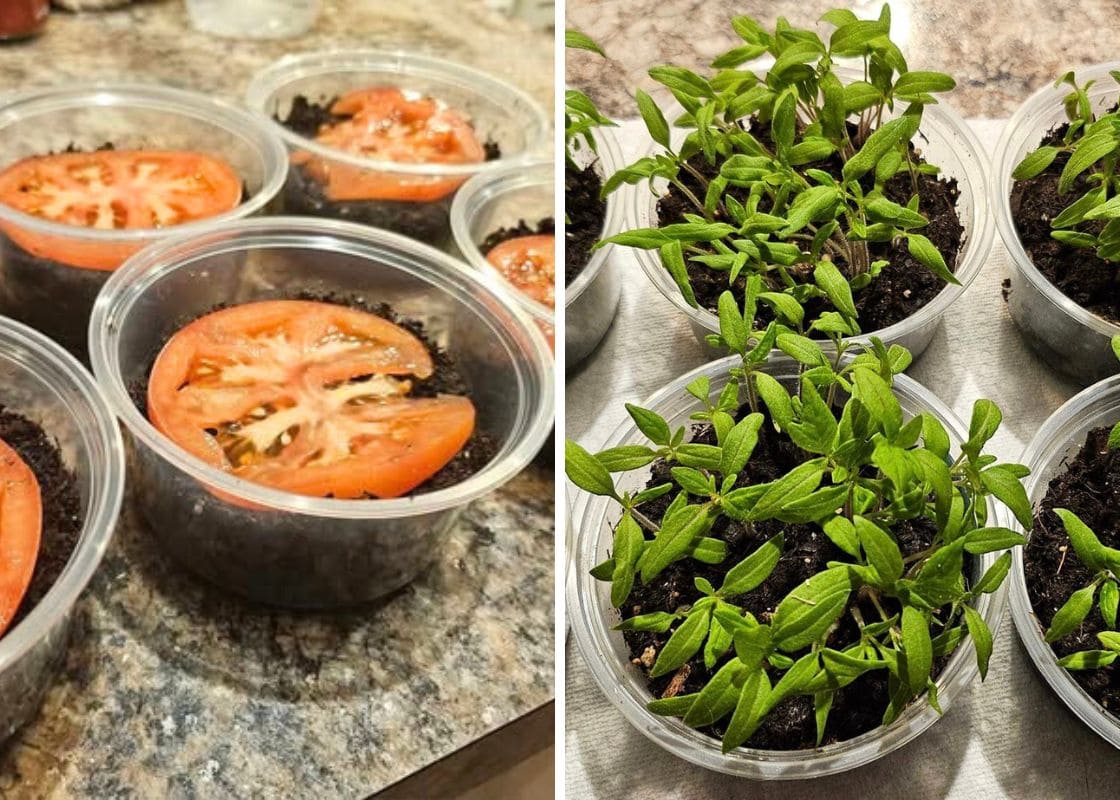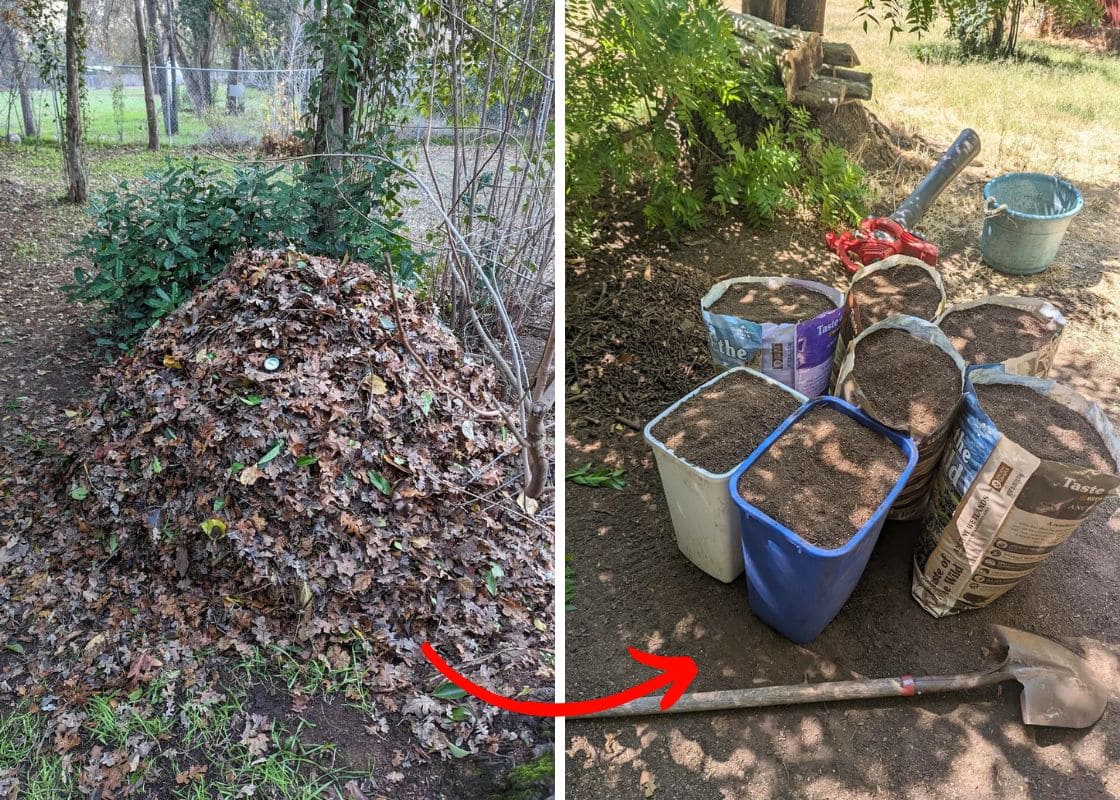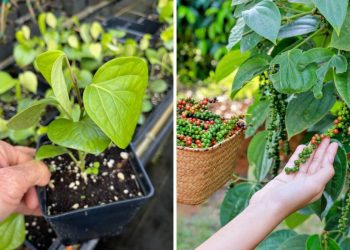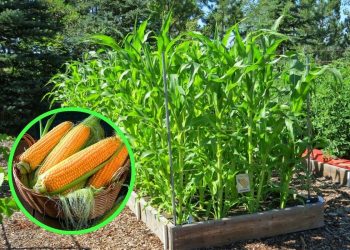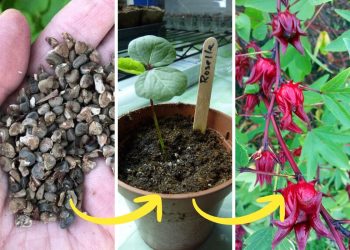Many gardeners with limited space often wonder, “Can I plant cucumbers and tomatoes together?” This common question arises on forums as people seek to maximize every corner of their gardens.
Fortunately, cucumbers and tomatoes can be excellent companions.

| Cucumber | Tomato | |
| Scientific name | Cucumis sativus | Solanum lycopersicum |
| Common name | Cucumber | Tomato |
| Plant type | Annual | Annual |
| Type | Fruit (used as a vegetable) | Fruit (used as a vegetable) |
| Fruit Shape | Cylindrical | Round, oblong, or pear-shaped |
| Length | 15-25 cm | 5-10 cm |
| Texture | Smooth or ridged | Smooth, slightly firm |
| Taste | Mild, slightly sweet | Sweet, tangy |
| Native | Asia | South America |
Can Cucumbers And Tomatoes Be Planted Together?
Yes, you can plant cucumbers and tomatoes together. They thrive in similar conditions, needing full sun and well-drained soil.
When planted together, they can efficiently use garden space; tomatoes can grow vertically, and cucumbers can climb. This pairing can deter pests and enhance growth.
Why Can Cucumbers and Tomatoes Be Planted Together?
Sunlight Requirement
Both cucumbers and tomatoes thrive in full sun, needing at least six to eight hours of direct sunlight daily. Placing them in the sunniest part of your garden ensures vigorous growth and high yields.
Experts show that adequate sunlight enhances photosynthesis, leading to healthier plants and better fruit production. You need to ensure that no large trees or structures shade them, as inadequate sunlight can hinder their growth.
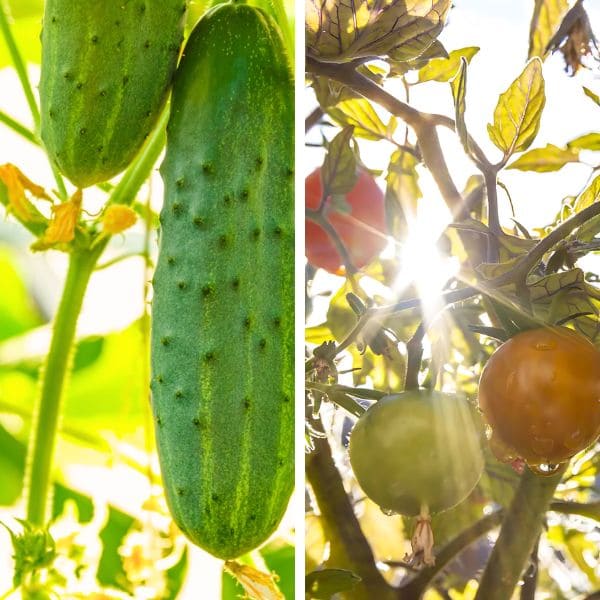
Soil Requirement
These plants thrive in well-drained, fertile soil rich in organic matter. In my experience, incorporating homemade compost has significantly boosted growth and yields.
You can also make DIY compost by combining kitchen scraps like vegetable peelings, coffee grounds, and eggshells with garden waste such as leaves and grass clippings. Turn the pile regularly to speed up decomposition.
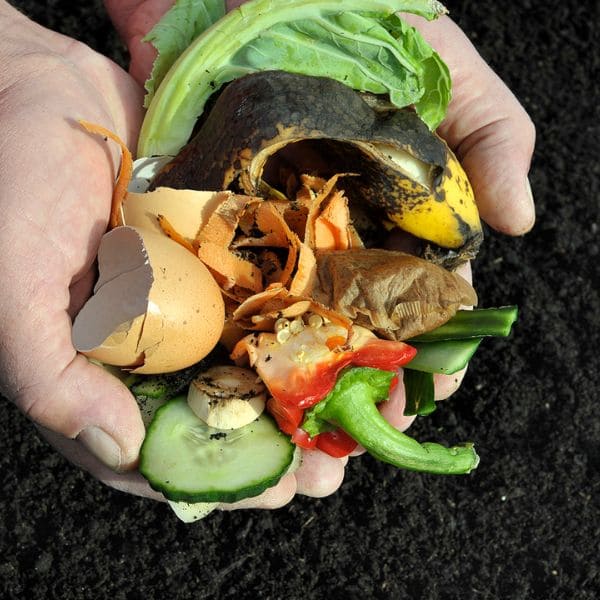
Good news for you is that they all benefit from the same nutrient levels in fertilizers.
At the first stage, use a balanced fertilizer (10-10-10) to support root and leaf development. As the plants begin to bloom, switch to a fertilizer higher in phosphorus (5-10-10) to encourage flowering and fruiting.
Ensuring your soil is loose and well-aerated helps the roots grow deeply and absorb nutrients effectively. Your task is regularly checking and amending the soil with compost or balanced fertilizers to keep your plants healthy and productive throughout the growing season.
Watering Requirement
Cucumbers and tomatoes need about 1-2 inches of water per week, depending on weather conditions. Watering early in the morning is best, as it allows plants to absorb moisture throughout the day and reduces the risk of fungal diseases.
In addition, you can consider using drip irrigation or soaker hoses to water at the base of the plants, keeping the foliage dry and minimizing disease risks. To check if the soil needs watering, insert your finger about an inch deep into the soil; if it feels dry, it’s time to water.

Temperature Requirement
Cucumbers and tomatoes can be planted together because they share a similar temperature between 70-85°F (21-29°C). Planting them after the last frost ensures they aren’t damaged by cold temperatures.
However, they both struggle in temperatures below 50°F (10°C), so maintaining a warm environment is crucial. If you live in a region with cooler nights, using row covers can help retain heat.
How to Plant Cucumbers And Tomatoes Successfully
Determinate Tomato with Trellised Cucumber
Determinate tomatoes are compact and grow to a fixed height, making them less likely to overshadow cucumber plants while trellised cucumbers, which climb vertically, benefit from the extra space around the bushy tomatoes.
Place tomatoes 18-24 inches apart and install trellises for cucumbers in between. This setup maximizes garden space and improves air circulation, reducing disease risk. It also makes harvesting easier, and enhances overall productivity in a small garden space.
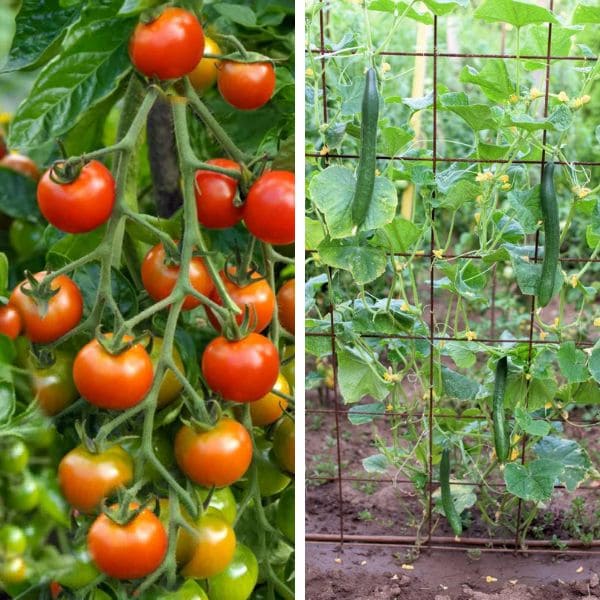
Indeterminate Tomato with a Bushing Cucumber
Another method you can try is maximizing the use of vertical and horizontal space. Indeterminate tomatoes grow tall and continuously produce fruit throughout the season, requiring support like stakes or cages.
In contrast, bushing cucumbers, which have a more compact growth habit, spread out without extensive vertical support. This combination works well because the tomatoes grow upwards, while the cucumbers occupy the lower space, creating a harmonious garden layout.
Place the tomato stakes about 24 inches apart and plant cucumbers around them. You also need to water at the base regularly and mulch around the plants to keep the soil moist.
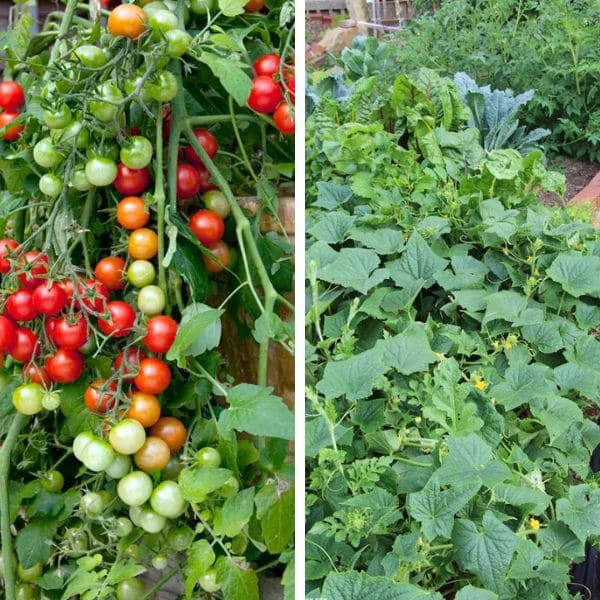
Indeterminate Tomato with a Vining Cucumber
Have you ever thought of growing indeterminate tomatoes with vining cucumbers yet? This setup works well because they both benefit from similar conditions – full sun, well-drained soil, and consistent watering.
Indeterminate tomatoes grow tall and need sturdy support like stakes or cages whereas vining cucumbers require trellises to climb, which allows both plants to grow vertically and save ground space.
This method has led to healthier plants and higher yields, with fewer issues related to overcrowding and disease. Additionally, the trellises help keep the cucumbers off the ground, resulting in cleaner and more accessible fruit.
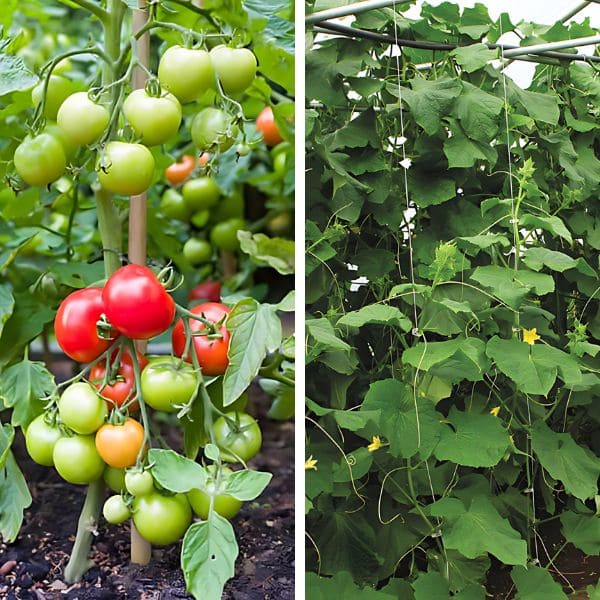
Challenges
Nutrient Competition
Both plants are heavy feeders and require a rich, nutrient-dense soil to thrive. If the soil isn’t sufficiently enriched, one plant may outcompete the other, leading to poor growth and yields.
To address this, I recommend adding compost or well-rotted manure before planting and using a balanced fertilizer throughout the growing season. Regular soil testing can help ensure optimal nutrient levels and ensure both plants have the resources they need to flourish.
One Plant Shades the Other
You can see clearly that the vigorous growth of indeterminate tomatoes can overshadow cucumbers, limiting their sunlight and stunting their growth.
To prevent this, you should strategically place the plants so the tomatoes are on the northern side and the cucumbers on the southern side. This ensures both receive ample sunlight throughout the day.
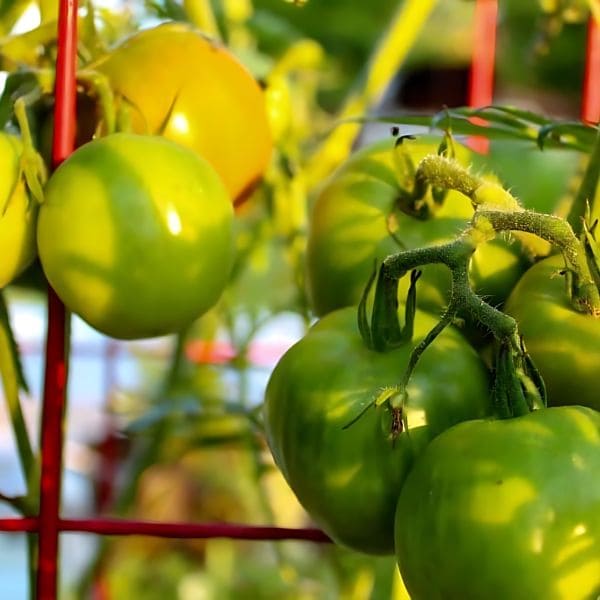
Disease Management
Both cucumbers and tomatoes are susceptible to issues like powdery mildew and blight. According to experts, proper spacing is essential to ensure good air circulation, which helps prevent these diseases.
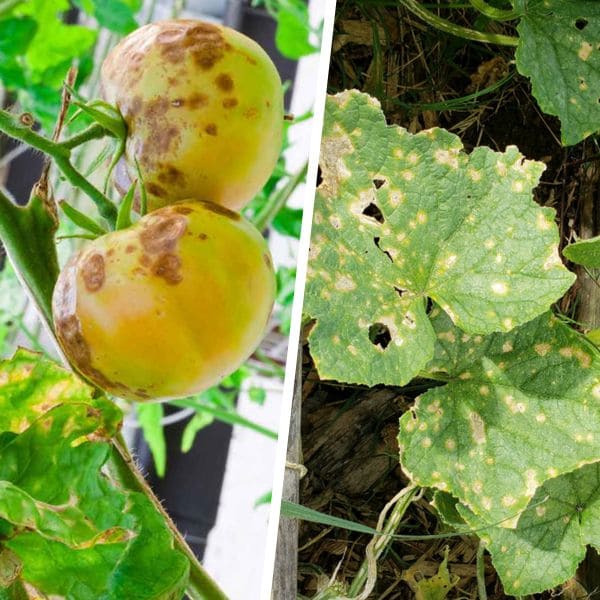
Crop rotation is another effective strategy; avoid planting cucumbers and tomatoes in the same spot each year to minimize soil-borne pathogens.
Besides, regularly inspect your plants and promptly remove any infected material to keep the rest of your garden healthy.
Care for Planting Cucumbers And Tomatoes
Spacing and Arrangement
Spacing cucumbers and tomatoes 18-24 inches apart works best, ensuring they have enough room to grow and air can circulate freely.
In your garden, you should plant tomatoes in a row with trellises for cucumbers right next to them. This setup allows both plants to get plenty of sunlight and makes the most of the available space.
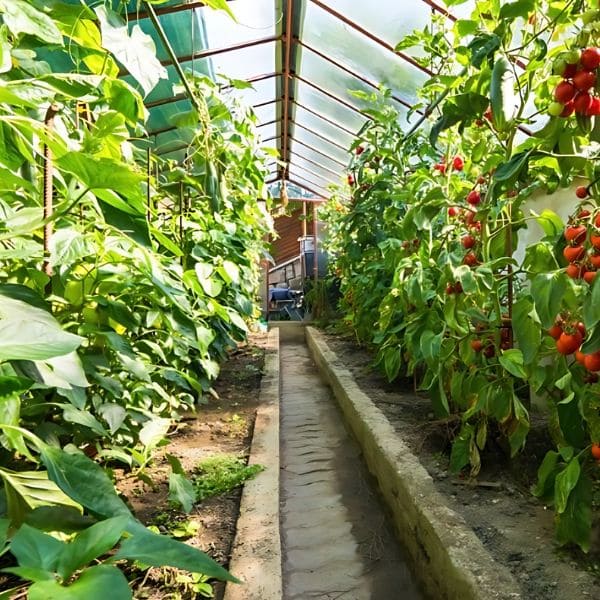
Support Structures
It’s better to use trellises for cucumbers and stakes or cages for tomatoes to encourage vertical growth. This setup makes maintenance easier, reduces the risk of diseases by improving air circulation, and results in better fruit quality.
Mulching and Soil Health
Mulching retains soil moisture, controls weeds, and regulates temperature, promoting healthier plants. I prefer organic mulches like straw or grass clippings, which decompose and enrich the soil, but inorganic options like plastic work well too.
To keep the soil moist and prevent disease, avoid overhead watering. Instead, use a soaker hose or drip irrigation to deliver water directly to the soil, keeping leaves dry and reducing the risk of fungal diseases.
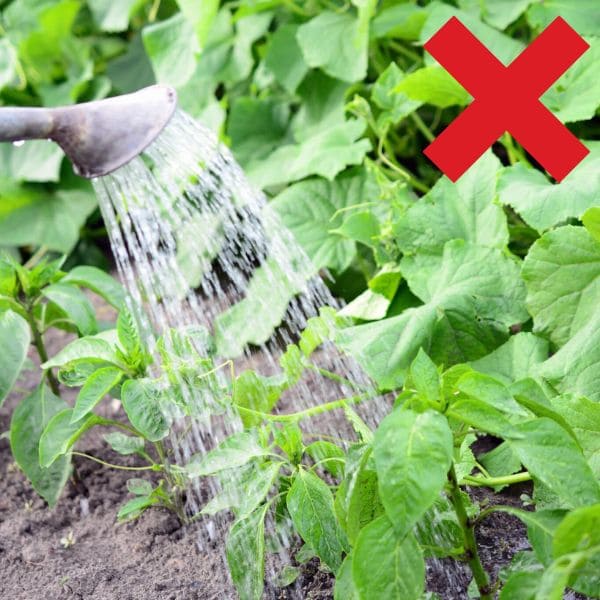
Companion Plants and Flowers
Companion planting cucumbers and tomatoes with basil and marigolds has worked wonders.
Basil not only enhances the flavor of tomatoes but also repels pests, while marigolds deter nematodes and attract beneficial insects. This combination improves pest control, boosts pollination, and promotes overall plant health.
Therefore, you can create a more balanced ecosystem in the garden, leading to healthier and more productive cucumbers and tomatoes.

FAQs
When is the best time to plant tomatoes and cucumbers?
Plant them after the last frost date in your area when the soil has warmed up.
Can you grow tomatoes, peppers, and cucumbers together?
Yes, tomatoes, peppers, and cucumbers can be grown together as they have similar growing requirements.
What should you not plant next to cucumbers?
Avoid planting cucumbers near potatoes and aromatic herbs like sage, which can inhibit their growth.
What should not be planted next to tomatoes?
Avoid planting tomatoes near brassicas (cabbage, broccoli), corn, and fennel, as they can negatively impact tomato growth.
